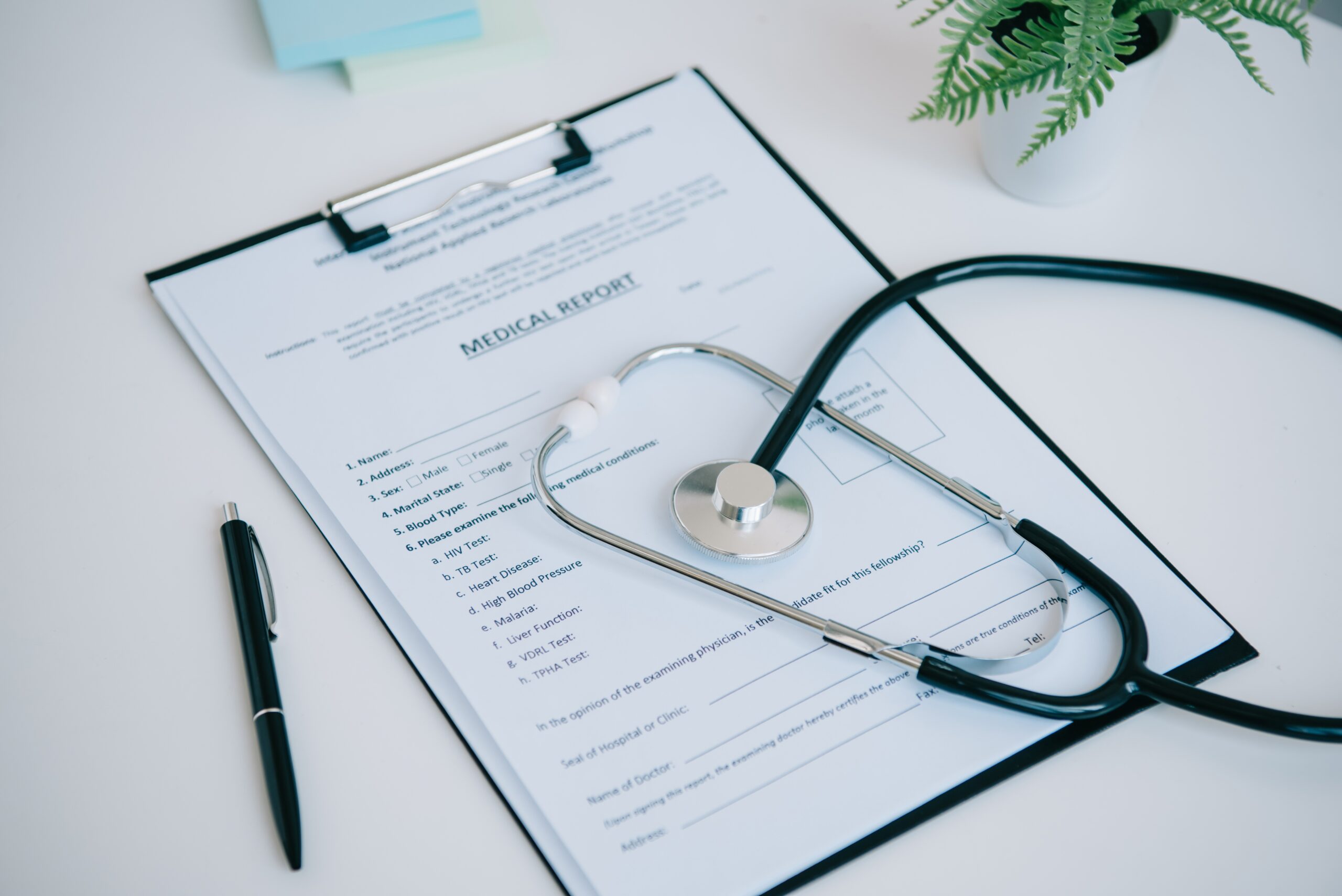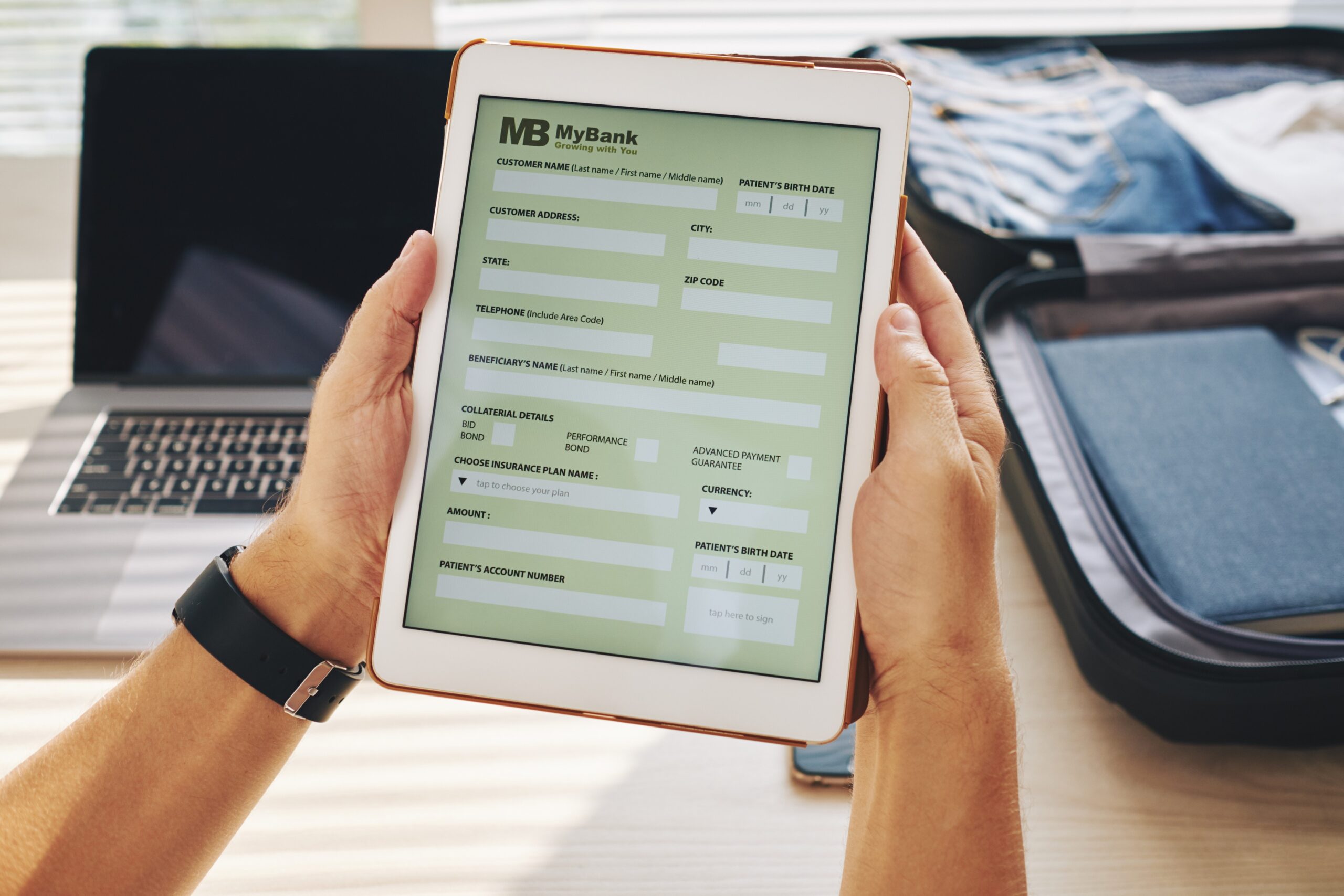The Importance and Key Features of Health Tourism Reservation Forms The health tourism sector requires special attention in planning and managing patients' treatment processes. In this context, the health tourism reservation form has become one of the most fundamental tools for communicating with patients and accurately understanding their needs. A well-designed reservation form not only …
The Importance and Key Features of Health Tourism Reservation Forms
The health tourism sector requires special attention in planning and managing patients' treatment processes. In this context, the health tourism reservation form has become one of the most fundamental tools for communicating with patients and accurately understanding their needs. A well-designed reservation form not only facilitates appointment scheduling but also improves the patient experience and increases the sense of trust.
The reservation form is the first point of contact between the patient and the institution in the field of health tourism. Therefore, the information provided through the form is critical for the accurate planning of treatment and travel arrangements. Ensuring patient trust is one of the prominent factors in the design and content of the form. A comprehensive and clear form allows patients to comfortably share their personal health information, thereby establishing a strong communication bridge between the patient and the healthcare institution.
When preparing a reservation form for health tourism, certain sector-specific requirements must be taken into account. These include the accurate and complete collection of personal health information such as the patient's chronic diseases, allergies, and past treatment processes. At the same time, treatment details, preferred doctor or clinic, travel dates, and accommodation should be clearly specified in the form. This information is indispensable for the smooth operation of the health tourism process.
The multilingual and culturally compatible nature of the forms is also very important to cater to a global patient base in the field of health tourism. Allowing patients to enter information in their own languages not only facilitates the form-filling process but also increases patient satisfaction. Considering cultural differences prevents misunderstandings in communication with the patient and lays the groundwork for more effective cooperation during the treatment process.
Among the key features of the health tourism reservation form are ensuring the security of the form, protecting data privacy, and making it easily accessible to users. Since patients share their personal and health-related sensitive information in these forms, data security must be maintained at the highest level. This prevents misuse of patient information and ensures full compliance with legal regulations.
In conclusion, reservation forms used within the scope of health tourism are important tools that directly affect the patient experience and constitute the first step of the treatment process. A properly designed form structure that meets patients' needs increases the satisfaction of both healthcare institutions and patients. Thus, it becomes possible to gain a competitive advantage in the health tourism sector.
Important Considerations in Health Tourism Reservation Form Design to Enhance User Experience
One of the most effective ways to increase patient satisfaction in the field of health tourism is to design a user-friendly reservation form. Keeping the form simple and understandable minimizes the difficulties patients may encounter while filling it out and speeds up the process. Removing unnecessary fields prevents the form from appearing complicated and allows users to easily enter only the information they need.

Principle of Simplicity and Clarity in the Form
The fundamental principle in the design of the reservation form is that users should not feel lost while filling it out. Therefore, the purpose of each field in the form must be clear. Long and complex forms may cause users to leave before completing the form. Especially in a sensitive area like health tourism, the patient reservation form being simple directly affects patient satisfaction and trust. Unnecessary questions or complicated fields can make filling out the form difficult; therefore, only the most critical information should be collected.
Mobile-Compatible and Fast-Loading Forms
The rate of reservations made via mobile devices is steadily increasing today. For this reason, designing a mobile-compatible health tourism form is essential to increase patient accessibility. Mobile compatibility ensures that the form displays properly and is easy to use on all devices. Additionally, fast loading of the form allows users to complete their transactions without waiting. Slow-loading forms may cause users to leave the site before completing the form.

Reducing Complexity with Step-by-Step Form Structure
Large and detailed forms can be intimidating for patients. Therefore, designing the reservation form as step-by-step (multi-step forms) allows users to fill out only a small group of information at a time. This method makes the form appear more manageable and increases user motivation. Providing visual cues such as progress bars or page numbers at each step helps patients know which stage of the form they are at.

Providing User Convenience with Autofill and Suggestions
Another feature that improves user experience in form design is the integration of autofill and suggestion systems. For example, previously entered information can be automatically presented again, or smart suggestions can be made for fields such as address or type of treatment. These features shorten the form filling time and reduce error rates. Especially in sensitive areas like health tourism, such conveniences provide a great advantage in ensuring accurate data entry.
Integration of Security and Privacy Measures
Security measures play a critical role in health tourism form design, where patients share personal and sensitive health information. Forms must fully comply with data protection laws such as GDPR and KVKK. Practices like data encryption, secure connections (SSL), and user consent help protect patients' information. Additionally, including explicit consent checkboxes and links to privacy policies in the form ensures legal responsibilities are met and reinforces patient trust.

In summary, the design of a user-friendly reservation form in the field of health tourism should have a simple, mobile-compatible, step-by-step structure supported by security measures to meet patients' needs. This approach increases both patient satisfaction and the success rate of reservations. Healthcare institutions can effectively increase patient conversion by paying attention to these principles.
Data Collection and Validation Techniques in Health Tourism Reservation Forms
In the field of health tourism, the complete and accurate collection of patient information is a critical step for the success of the treatment process. Reservation forms used in health tourism data collection processes should include important information such as the patient's medical history, allergies, current conditions, and treatment preferences. Therefore, the effectiveness and accuracy of data collection are among the primary goals in form design.
Accurate and Complete Collection of Critical Patient Information
The fields in the reservation form must cover critical information such as patients' medical history and travel plans. These fields are vital for preparing a personalized treatment plan. For example, information about chronic diseases, current medications, or allergies enables the healthcare team to intervene correctly. Similarly, travel dates and accommodation preferences contribute to the smooth progress of the organization.
To ensure this information is collected accurately, the fields must be clear and understandable. Additionally, some fields should be made mandatory to increase the accuracy of the information entered by patients. This prevents critical data from being left incomplete and avoids information gaps during the treatment process.
Enhancing Data Quality with Form Validation Techniques
Effective reservation form validation methods should be applied to reduce the likelihood of user errors while filling out the form. Mandatory fields, format checks, and real-time error messages are among these techniques. For example, format validation should be applied to fields like phone numbers or email addresses, and users should be immediately alerted if incorrect information is entered.
Real-time error messages allow users to see missing or incorrect information before completing the form. This improves both user experience and the accuracy of the collected data. Furthermore, regarding patient data security, unnecessary data requests should be avoided, and only information essential for the treatment process should be requested.
Creating Appropriate Data Fields for Medical History and Treatment Preferences
A health tourism reservation form should include specific fields where patients can accurately express their medical history and treatment preferences. These fields can be designed as open-ended text boxes, multiple-choice questions, or dropdown menus. This allows patients to describe their current conditions in detail and comprehensively.
For example, detailed information should be requested about previous surgeries, medications used, and allergies. For treatment options or doctor preferences, optional fields should be created to facilitate patients in specifying their choices. This structure enables healthcare institutions to provide more personalized services to their patients.
Strategies to Protect Data Security and Patient Privacy
The information collected in health tourism reservation forms is extremely sensitive. Therefore, comprehensive measures must be taken to protect patient privacy and ensure data security. Encrypted connections using SSL certificates should be used for secure transmission of form data, and data should be stored on reliable servers.
Additionally, regulations such as GDPR and KVKK must be considered, informing patients about how their personal data is processed and obtaining their explicit consent. Providing a link to the privacy policy in the form and transparently stating data processing procedures increases patient trust.
Integrations: Compatibility with CRM, Hospital Management Systems, and Payment Infrastructures
The effectiveness of reservation forms depends on the integration of the collected data with other systems. In health tourism, ensuring that form data works compatibly with CRM systems, hospital management software, and payment infrastructures automates and accelerates the process.

Thanks to these integrations, patient information is instantly transmitted to relevant departments, enabling quick treatment and travel planning. Additionally, completing payment processes securely through the form positively affects the patient experience. Thus, a more practical and effective reservation process is created for both healthcare institutions and patients.
Applying accurate data collection and effective validation techniques in health tourism reservation forms increases patient satisfaction and ensures smooth progress of treatment processes. Therefore, forms supported by data security and integration strategies are fundamental pillars of successful health tourism operations.
SEO and Digital Marketing Strategies to Optimize Reservation Forms
In the health tourism sector, providing quality service alone is not enough; it is also crucial to ensure that these services reach the right audience and that patients can easily find and fill out the reservation form. At this point, health tourism reservation form SEO efforts and digital marketing strategies play a critical role in increasing the form's accessibility and conversion rates.
Creating SEO-Friendly Titles, Meta Descriptions, and URL Structures
To increase the visibility of the reservation form page in search engines, the page title and meta description should be carefully prepared. The title should clearly reflect the purpose of the form and the context of health tourism. For example, descriptive and goal-oriented titles like “Fast and Reliable Health Tourism Reservation Form” attract users’ attention and help search engines index the page correctly.

The meta description should briefly and effectively summarize the page content. Here, elements such as the ease of use, reliability, and contribution to patient satisfaction of the reservation form can be highlighted. This increases the click-through rate of the snippet appearing in search results.
The URL structure should be user-friendly and understandable. Instead of complex or meaningless URLs, clear and keyword-containing structures like “/health-tourism-reservation-form” should be preferred. This strengthens SEO performance and makes it easier for users to remember the page.
Keyword Research and Natural Content Integration
The texts used on the reservation form page should naturally and fluently include keywords frequently searched by the target audience. By conducting keyword research, commonly used terms related to health tourism should be identified and these keywords should be included in form titles, descriptions, and button texts.
However, keyword density should not be excessive; because this negatively affects user experience and may be considered spam by search engines. Using natural language increases visitors’ motivation to fill out the form and strengthens the page’s position in search results.
Technical SEO Practices for Fast and Smooth Form Operation
The technical infrastructure of the form page is very important for SEO performance. Fast page loading allows users to complete their transactions without leaving the site. Unoptimized form codes or heavy images can prolong loading times, which reduces conversion rates.
Additionally, cross-compatibility tests should be conducted to ensure the form works smoothly on different browsers and devices. Within the scope of technical SEO, fundamental elements such as page speed optimization, mobile compatibility, and secure connection (HTTPS) should be fully implemented. This improves both user experience and positively influences how search engines evaluate the page.
Integration of User Reviews, Success Stories, and Social Proof
In digital marketing, social proof is indispensable for gaining patients’ trust. Including reviews or success stories from patients who have previously received services on the reservation form page positively influences new users’ decision to fill out the form.

Such content reinforces the message of quality and reliability in the health tourism field. Reviews and references make the form page appear sincere and transparent. Additionally, success stories in visual or video formats can attract visitors’ attention and increase conversion rates.
Performance Measurement and Improvement with Google Analytics and Conversion Tracking
The success of a digital marketing strategy should be measured and optimized through accurate data analysis. By integrating Google Analytics and conversion tracking tools into the reservation form page, visitor behaviors can be monitored in detail. Data such as which sources users come from to complete the form and where they abandon it are collected.
Based on this data, the form design and page content can be continuously improved. For example, if a form field is frequently abandoned, it can be simplified or made more understandable. Thus, user experience is enhanced and conversion rates increase.
Reservation forms supported by digital marketing and SEO strategies within the scope of health tourism rank higher in search engines and maximize patient conversion. Modern techniques and user-focused approaches effectively strengthen the competitive advantage of health tourism companies.
Advanced Tips and Best Practices to Increase Success in Health Tourism Reservation Forms
Increasing the success of reservation forms in the health tourism sector is not only about ensuring basic design and functionality; it is also possible by enriching the user experience with advanced techniques and innovative applications. Health tourism reservation form tips play a critical role in enhancing the form's effectiveness and patient conversion rates.
Personalized Form Experience and Use of Dynamic Fields
Each patient filling out the reservation form has different needs. Therefore, offering a personalized experience in the form helps users stay more engaged in the process. By using dynamic fields, the subsequent sections of the form can be shaped according to the patient's previous responses. For example, specialist doctor options or additional health questions related to the treatment type specified by the patient can automatically appear.

Such adaptable form structures ensure that unnecessary fields are not shown to the user and speed up the form-filling process. Additionally, a personalized form experience makes patients feel special and valued, increasing patient satisfaction and trust.
Multiple Language Options and Adaptation to Cultural Differences
Health tourism is inherently an international field and serves patients from different countries. In this context, offering multiple language options in the reservation form significantly increases the form’s accessibility and ease of use. When patients fill out the form in their native languages, misunderstandings decrease and data entries become more accurate.
At the same time, the content and language used in the form should be adapted considering cultural differences. For example, certain cultures may require more sensitive approaches to specific health-related topics. Using expressions appropriate to these differences in the form prevents possible communication problems and establishes a positive connection between the patient and the healthcare provider.
Providing Instant Help with Chatbot and Live Support Integrations
Users may have questions or encounter technical issues during the reservation form filling process. In this case, chatbot and live support systems integrated into the form page improve the user experience by providing instant solutions. Patients can quickly resolve issues they face and continue the form-filling process without interruption.
Chatbots can automatically answer frequently asked questions, provide information about appointment options, or offer guidance. Live support offers human interaction for more complex requests. Using such support mechanisms increases the likelihood that users will complete the form and gives health tourism companies a professional image.
Example Form Applications and Analyses from Successful Health Tourism Companies
The reservation form applications of successful health tourism companies are concrete examples of best practices and innovations in the sector. These companies increase patient conversion by offering critical features such as user-centered design, advanced validation systems, and strong data security together.
For example, some companies use multi-step, simple, and mobile-compatible forms; others respond to different user needs with dynamic fields and multilingual support. Additionally, including social proof such as patient reviews and success stories on form pages is effective in building trust.
These examples can serve as a guide for other companies in the health tourism field. Considering user feedback in form design and conducting regular performance analyses are necessary for continuous improvement.
Increasing Form Performance with Continuous Testing and A/B Tests
One of the most effective ways to increase the success of a reservation form is to conduct continuous testing and A/B tests. These tests measure the impact of different form designs, field placements, colors, or call-to-action buttons on users. Thus, objective data reveals which version achieves higher conversion.
For instance, the effect of form length, mandatory fields, or autofill options can be evaluated with A/B tests. Based on the results obtained, the form is optimized and the rates of users completing the form are increased. This continuous improvement process represents an important step in the digital transformation of health tourism companies.
Advanced tips and successful practices ensure that health tourism reservation forms are not only functional but also user-centered and high-performing. Thus, while patient conversion increases, the competitive power of healthcare institutions also rises significantly. Modern technologies and approaches that prioritize user experience are indispensable for sustainable success in the health tourism sector.





